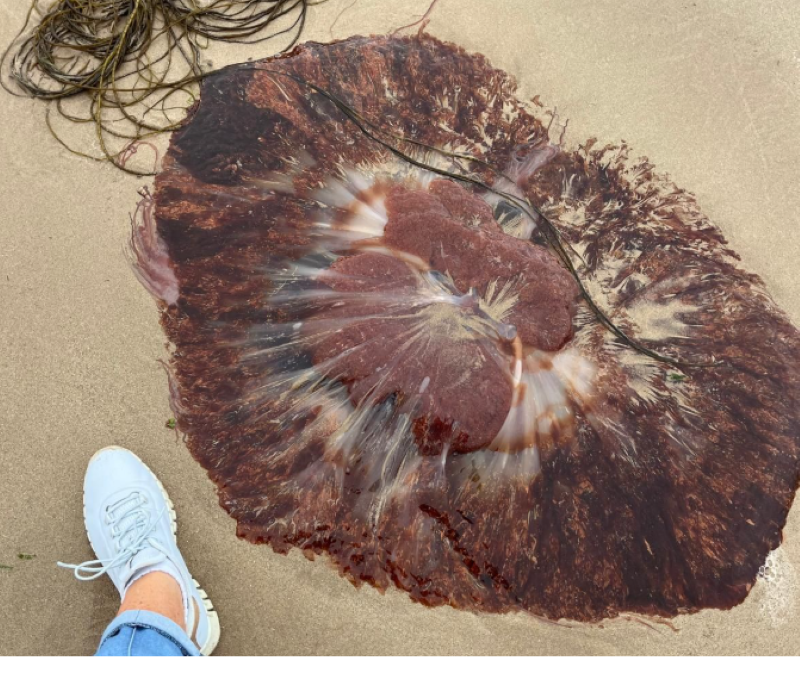Main pic: A Lion’s Mane jellyfish washed up on Ludden beach, Buncrana. Pic by Geraldine McGann.
The Irish Coast Guard has advised people to familiarise themselves with the different types of jellyfish in local coastal waters and how to deal with a sting if they get one.
The organisation said it had received some reports of people getting painful stings.
The advice comes as we are at the start of another warm spell, with many families heading to the beach.
There are several different species of jellyfish common in Irish waters, with the Lion’s Mane known to give one of the worst stings.
Lion’s Mane has been spotted on beaches around the coast, including Donegal, this summer.
“That time of year again – Lion’s Mane jellyfish are in Lough Swilly,” a spokesperson for Lough Swilly RNLI said.
“This guy (main pic) was washed up on Ludden beach, Buncrana. They can give you quite a sting, so be mindful of your kids and the family dog.”
Lion’s Mane can be 30cm in diameter, with long tentacles measuring up to three metres.
Swimmers might not necessarily know what has stung them, but the best way to deal with it is to physically remove the tentacles wearing gloves and not to rub the area on your skin.
Keeping the affected area in the sea water also helps to ease the pain.
Lion’s Mane is very common in Irish waters and its sting is worse than your average jellyfish.
Even when it has been washed up on the beach it can sting, and people should not touch them or let their dogs near them.
The Irish Coast Guard advises people to check out the various jellyfish on the jellyfish id card on www.beaches.ie.
They can also go to the HSE website for advice on how to treat a jellyfish sting.
Tags:








